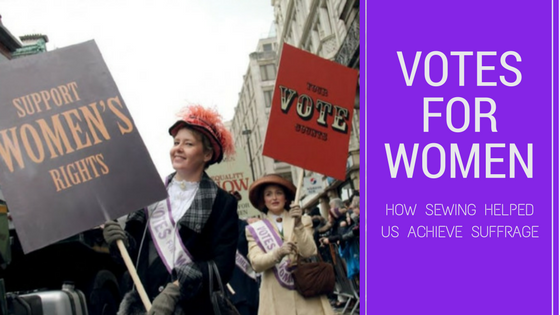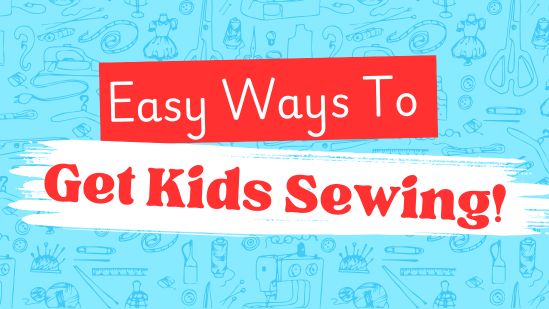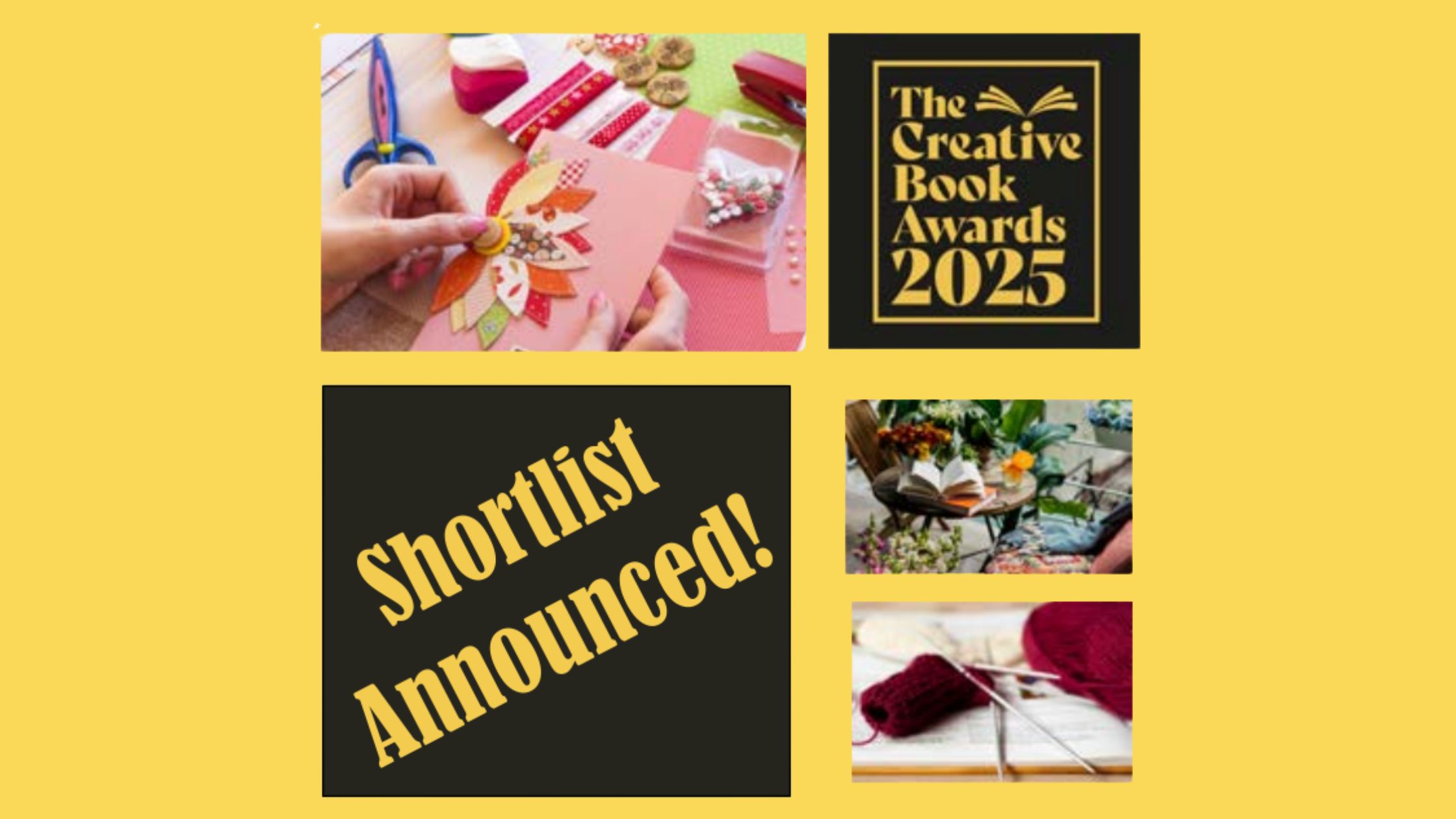2018

The Suffragettes proved that sewists have the power to inspire change in the world
by Emma Thompson
_Museum_of_London.jpg)
Image © Museum of London
Today, 6th February 2018, marks the centenary of the Representation of the People Act 1918, which allowed some women to participate in the British electoral voting system. This step towards equality was won after countless debates determining our capacity to make informed decisions, more than 50 years of petitioning parliament, the imprisonment and force-feeding of campaigners, and the death of Suffragette Emily Davidson. We often take it for granted nowadays that we are allowed to participate in election days, and can forget the effort and sacrifices our foremothers made for us to be granted this right.
_Museum_of_London.jpg)
Suffragettes raise money for the cause, selling sweets at the Women’s Exhibition in 1909. WSPU leader Emmeline Pankhurst is third from the right. Photograph by Christina Broom © Museum of London
Starting out as a very small group with little support, women who wanted the vote had to be resourceful, using whatever they had to hand to create their campaign material. It’s hardly surprising a lot of it was sewn, because practically the entirety of the female population had been taught the ‘womanly craft’. This meant that everyone who wanted to get involved could easily whip up something, whether it was a subtle hand-embroidered coat button or great sashes and banners for protests and demonstrations – meaning that the message was able to quickly spread throughout the country. Soon, the distinguishing combination of purple, green and white (said to represent the dignity, hope and purity of the cause) was everywhere.

Medal presented to Scottish Suffragette Florence Haig inscribed ‘For Valour’ with the dates of her three hunger strikes. Image © Museum of London
Strong stitches
The important link between sewing and the women’s suffrage movement was not overlooked even at the time, and themed sewing goods were soon available on the market, including Votes for Women trademarked hook and eye closures sold by members of the Women’s Social and Political movement, and a hand-crank sewing machine named Defiance by the distributor W. J. Harris & Co in a show of support and recognition.

The Defiance machine was advertised in Suffragette newspaper Votes for Women

As clashes with the authorities became more bitter, women continued to use the needle to promote their message and drum up support. In 1910, 80 hunger-strikers embroidered their purple signatures on linen rectangles, which were stitched together onto a traditional friendship quilt and sold to raise £10 (the equivalent of more than £1,000 today) for the cause and carried proudly in public later that year. banners such as this were incredibly significant in the campaign for equality as they displayed the message in both a beautiful and visually striking way, with designs even from professional artists such as May Morris, which the public couldn’t help but take notice of.
Beyond expectations
Mary Lowndes, a successful artist at the time, applauded the ‘political societies started by women, managed by women and sustained by women’ and how ‘in their dire necessity they have started them; with their household wit they manage them; in their poverty, with ingenuity and many labours, they sustain them.’ Whereas political meetings before had been carried out around a table with the occasional cigar, plans for suffrage were made by women whilst they were getting on with everyday life, holding meetings at work or in between taking care of their children – then crafting campaign material when they got a chance.

Image © Museum of London
Despite the fierce opposition faced from those who wished to retain the status quo, these politically-charged women were successful largely in part because they were left to their own devices whilst crafting campaign material. Deliberately making use of what was, and still can today, be looked down upon by men as a frivolous ladies’ activity, they were not only creating works of art but uniting with other women whilst announcing to society that they were unashamed of their sex.
Although it worked in women’s favour in this instance, in today’s society the dismissal of crafts because they are largely undertaken by women can, in fact, cut many men off from the physical and mental benefits we all enjoy. However, these misconceptions are very gradually being broken down and the stigma that guys once faced for stitching is fading – just look to past contestants of The Great British Sewing Bee if you need a reminder. Moreover, in light of recent events triggering the #MeToo campaign and ‘The Silence reakers’ being named as Time magazine’s Person of the Year 2017, we’re hoping to see women taken more seriously from here on out in every aspect.
You can do it too
Making social and political change with our hands is definitely not a thing of the past, and this side of the millennium has seen crafters tackle serious modern-day issues, from Danish artist Marianne Jorgensen’s anti-war knitted tank blanket to the Craftivist Collective successfully lobbying a major British retailer to pay their employees a living wage by sending board members embroidered handkerchiefs.
This form of protest was coined as ‘craftivism’ by Betsy Greer, who said, ‘Voicing opinions through creativity makes your voice stronger, your compassion deeper and your quest for justice more infinite.’ In this day and age, with fewer people able to sew but more passion for the craft from those who can, it’s easier than ever for stitchers to make a difference. Simply create something beautiful that conveys the message of what you think needs to change, show it in a public place, and people will be drawn to it. Whether you’re a master crafter or just starting out, be proud of what you can achieve and let what you make really represent you. Oh, and regarding what exactly you should protest about? That decision, and every other one you make, is entirely yours, thanks to our Suffragette sisters.

“Suffragettes we sit and sew/ Sew and sit and sit and sew/ Twenty-five are we:/ Making shirts and socks for men/ Cannot get away from them/ Even here you see.” By Constance Bryer whilst in Birmingham prison, serving four months for breaking windows.
What did we win?
Full electoral equality between men and women was not allowed until 1928. The Representation of the People Act 1918 gave all men over 21 the vote, as well as those over 19 who had served in WWI. Women had to be 30 years of age and above and meet one of the following criteria:
• Hold a degree and live in a constituency with a university
• Be (or be married to) a member of the Local Government Register
• Own property
If these rules still applied, how many women you know would have the right to vote?
Find out more
The Votes for Women exhibition commemorates the centenary of the first women winning the right to vote, highlighting the untold stories of women in the Suffragette movement. Entry is free, and the exhibition runs until 2nd January 2019. Find out more at museumoflondon.org.uk
New this week
.jpg)
Quick Quilting & Patchwork Patterns and Inspiration
9 Apr 2025
[includes sponsored content] From small pieced projects to statement throws, these patterns and products…

Easy Ways To Get Kids Sewing!
11 Mar 2025
[contains sponsored content] Share your love of sewing with a young one and give…

Creative Book Awards 2025 Shortlist Unveiled!
17 Jan 2025
Welcome to the Creative Book Awards 2025! Since launching in 2021, these awards…
